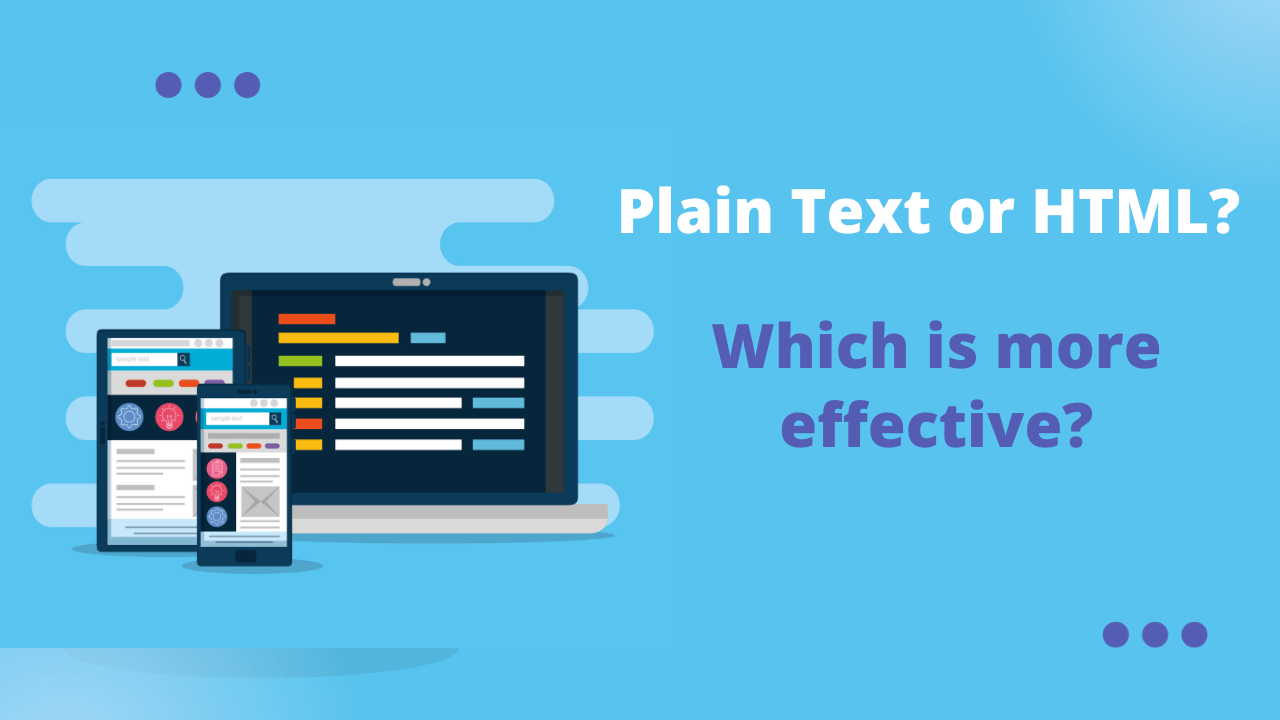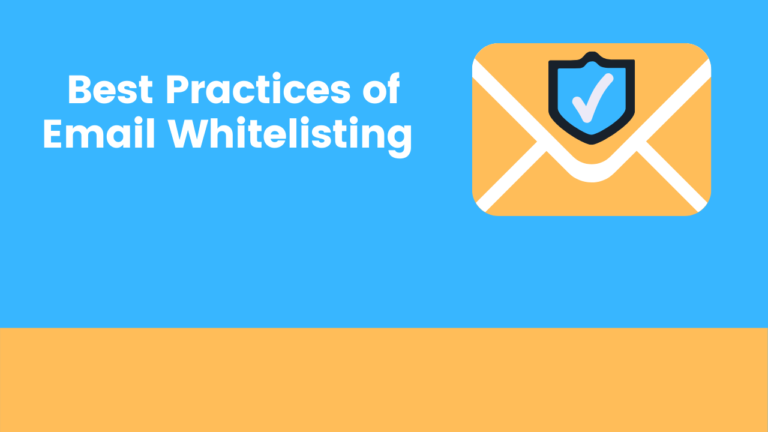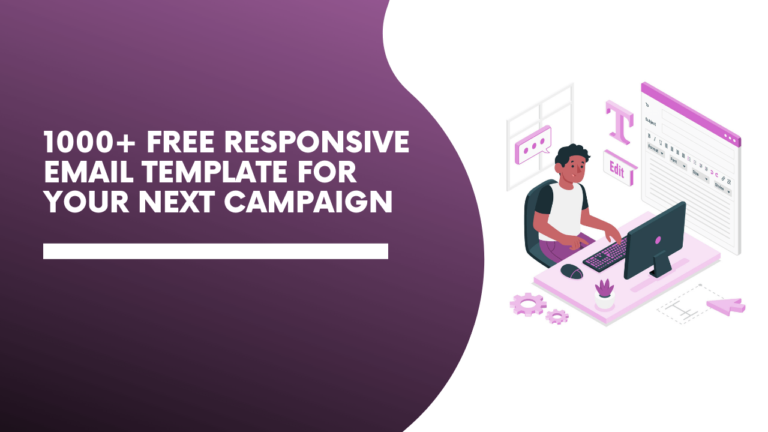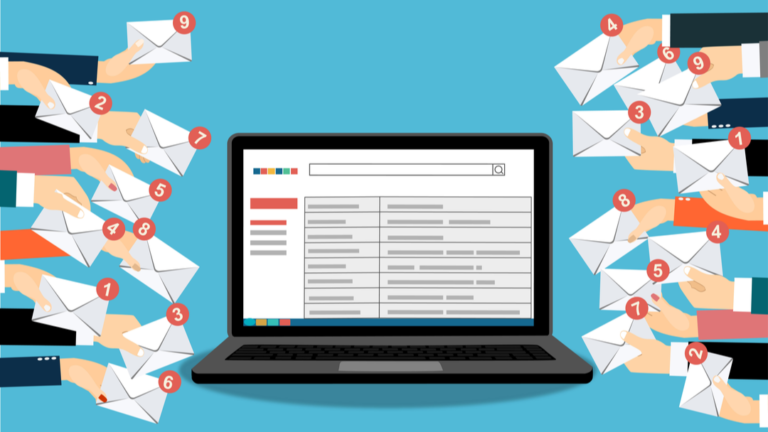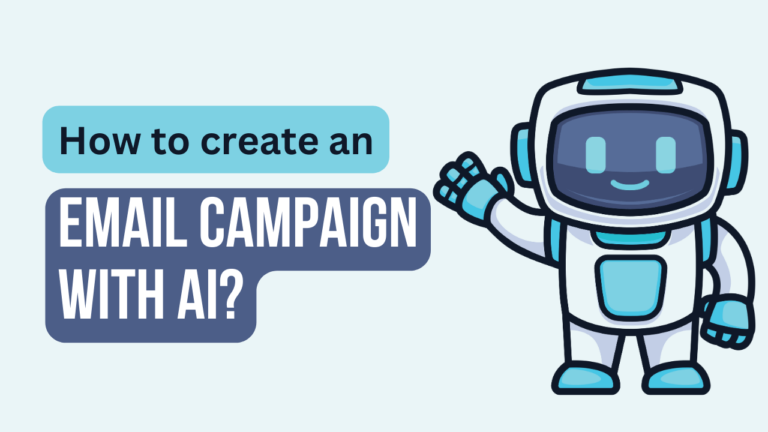Most people prefer visually attractive emails, but the challenge lies in creating appealing emails that incorporate images, videos, links, HTML, and CSS. This can make your email bulky and chaotic, causing spam filters to prevent your emails from reaching your recipients’ inboxes. To overcome this, it’s essential to be well-versed in email marketing best practices.
In this article, we will provide insights into when to use plain text or HTML emails, discuss their pros and cons, which one is more effective, and help you decide which option to select for your email marketing campaign.
When to use Plain text or HTML email?
Let’s explore when it’s best to use plain text emails and when HTML emails are the more suitable choice, providing valuable insights to help you make informed decisions in your email marketing strategy.
Plain Text Email
When running cold email campaigns, it’s best to use plain text emails. They tend to have better email deliverability than HTML emails. Plain text emails smoothly pass through spam filters, improving your chances of reaching your recipients’ inboxes.
Keep in mind that your IP and domain reputation also affect email deliverability. It’s a good practice to test your emails before sending them to your actual prospects and consider using email warmup tools to enhance your email deliverability.
Choosing plain text emails is the preferred option for a cold email outreach campaign. Using plain text emails can help you reach more prospects and boost your sales.
HTML Email
Marketers usually favor HTML emails because their eye-catching designs attract more customers and increase conversion. With HTML emails, you can include images, links, videos, gifs, countdown timers, and interactive designs. Additionally, you can track email opens and clicks.
HTML emails are handy for various purposes, including sending newsletter campaigns, product launches, webinars, lead nurturing, abandoned cart reminders, welcome messages, special offers, holiday promotions, and shopping notifications.
When sending emails to subscribers who are already familiar with your brand, using HTML emails is a smart choice. Subscribers tend to appreciate customized emails that cater to their preferences. HTML emails with personalization tend to be more effective than any other type of email.
Whether you choose HTML or Plain text email, always remember to check the spam score before sending it to customers. Effective email marketing hinges on making the right choice between plain text and HTML emails based on your campaign’s goals and your audience’s preferences.
What are the Pros and Cons of Plain Text Email and HTML Email?
Email marketing is a powerful tool, but the choice between using plain text or HTML emails can significantly impact the effectiveness of your campaigns. Each format has its own set of pros and cons.
Now, we will explore the pros and cons of plain text emails and HTML emails.
Pros of Plain Text Email:
1. High Deliverability
Plain text emails are less likely to trigger spam filters, ensuring that your messages reach your recipients’ inboxes.
2. Simplicity
Plain text emails are straightforward and easy to read, making them accessible to a wide audience.
3. Speed and Efficiency
Creating plain text emails is quick and requires minimal resources, allowing for rapid campaign deployment.
4. Cross-Platform Compatibility
Plain text emails display consistently across various email clients and devices, reducing the risk of formatting issues.
Cons of Plain Text Email:
1. Limited Design Options
Plain text emails lack the visual appeal and design elements that HTML emails can offer.
2. Reduced Engagement
Without multimedia elements like images and videos, plain text emails may not be as engaging or eye-catching to recipients.
3. Limited Tracking Abilities
Tracking opens, clicks, and other metrics can be more challenging with plain text emails compared to HTML emails.
4. Limited Personalization
Customization and personalization options in plain text emails are more limited, potentially impacting their effectiveness in certain marketing scenarios.
Pros of HTML Email:
1. Rich Visuals
HTML emails allow for engaging, visually appealing designs with images, videos, graphics, and interactive elements, which can capture recipients’ attention.
2. Branding Opportunities
HTML emails provide ample space for branding, enabling you to reinforce your company’s identity and make a lasting impression.
3. Multimedia Content
You can include multimedia elements, such as videos and GIFs, to convey your message more effectively and creatively.
4. Interactivity
HTML emails can incorporate interactive features like clickable buttons, forms, and navigation menus, enhancing user engagement. Use Stripo Email Editor to create interactive emails.
Cons of HTML Email:
1. Deliverability Challenges
HTML emails may face higher chances of getting caught in spam filters if not properly optimized or if they contain excessive code or external content.
2. Inconsistent Rendering
HTML emails can display differently across various email clients and devices, requiring extra effort to ensure a consistent appearance.
3. Complex Design
Creating HTML emails with intricate designs can be time-consuming and may require design and coding expertise.
4. Accessibility Concerns
HTML emails, if not coded with accessibility in mind, may not be user-friendly, and subscribers not be able to see your email clearly.
Which is More Effective Email Format: Plain Text or HTML Email?
The effectiveness of plain text versus HTML emails depends on your specific email marketing goals and your target audience. Each format has its advantages and is better suited to different situations. Here’s a breakdown:
When Plain Text Emails are More Effective?
-
Personal Communication
Plain text emails are ideal for one-on-one or highly personalized messages. They often feel more genuine and can create a sense of personal connection.
-
Simplicity and Clarity
When you want to convey a straightforward message, such as a simple announcement or a text-based cold email, plain text is often more effective. It avoids distractions and focuses on the content.
-
Email Deliverability
Plain text emails tend to have better deliverability rates because they are less likely to trigger spam filters.
-
Universal Accessibility
Plain text emails are accessible to all recipients, including those who use text-to-speech software or have disabilities.
When HTML Emails are More Effective?
-
Visual Impact
For marketing campaigns that require eye-catching visuals, such as product promotions or event invitations, HTML emails are more effective. They allow you to incorporate images, videos, and interactive elements.
-
Branding and Design
HTML emails offer extensive branding opportunities and can reinforce your company’s visual identity. This is essential for establishing a robust brand image.
-
Engagement and Click-Through Rates
HTML emails tend to have higher engagement rates due to their rich content. Interactive elements, such as clickable buttons, can encourage recipients to take action.
-
Tracking and Analytics
HTML emails provide better tracking capabilities, allowing you to measure opens, clicks, and other metrics more accurately.
Neither plain text nor HTML emails are universally more effective; it depends on your specific email marketing objectives. Consider your audience’s preferences, the content of your message, and the goals of your campaign when choosing between these formats. Additionally, A/B testing can help you determine which format works best for your particular audience and objectives.
Conclusion
Both formats offer unique benefits and drawbacks, and the choice between them should be guided by a clear understanding of your target audience and the goals of your email marketing efforts.
In some cases, the simplicity and accessibility of plain text emails may prevail, while in others, the visual impact and branding opportunities of HTML emails may be the better choice. Ultimately, successful email marketing often involves a combination of both formats, with thoughtful A/B testing to determine which works best for your unique circumstance.
FAQs
1. What major distinctions exist between plain text and HTML emails in the realm of email marketing?
The key differences between plain text and HTML emails in email marketing are their visual presentation and interactivity. HTML emails offer rich visual elements, such as images, videos, and links, making them more visually appealing and engaging.
In contrast, plain text emails are text-based and lack these visual and interactive features, but they tend to have higher deliverability rates, are more accessible, and are often preferred for personal or simple communications. The choice between them depends on your campaign’s goals and your audience’s preferences.
2. Which format is better for a B2B email marketing campaign?
For B2B email marketing, a well-designed HTML email format is often more effective. HTML emails provide opportunities for showcasing professionalism, branding, and conveying detailed business information. They allow for the inclusion of visuals, links, and interactive elements, which are valuable for engaging business audiences and promoting products or services effectively.
However, it’s important to ensure that HTML emails are well-crafted, mobile-responsive, and tested to avoid potential deliverability issues. The choice ultimately depends on the specific campaign objectives and the preferences of the B2B audience.
3. Do HTML emails have a higher risk of ending up in spam folders?
HTML emails can have a higher risk of ending up in spam folders if not properly optimized. Emails with excessive code, large images, or suspicious links may trigger spam filters.
However, well-designed HTML emails with legitimate content are less likely to be marked as spam. It’s crucial to follow best practices, test emails, and maintain good sender reputation to minimize the risk of being categorized as spam.
4. Can I use A/B testing to identify the optimal email format for my audience?
Yes, using A/B testing is a smart approach to determine the best email format for your audience. A/B testing allows you to experiment with different email formats (e.g., plain text vs. HTML) and gather data on which one resonates better with your specific audience. It provides valuable insights to help you tailor your email marketing strategy and improve engagement, ultimately leading to more effective communication with your recipients.
5. Do HTML emails raise any security concerns?
Yes, there are security concerns associated with HTML emails. HTML emails can potentially contain malicious code or links that may pose security risks. Phishing attempts, malware, and tracking mechanisms can be embedded in HTML emails.
It’s essential to be cautious when opening HTML emails from unknown or untrusted sources, and to keep email clients and security software up to date to mitigate these risks.
6. How do I strike a balance between visual appeal and authenticity in emails?
To strike a balance between visual appeal and authenticity in cold emails, you can use a personalized and engaging subject line and opening, followed by a well-structured, easy-to-read message in plain text or a simple HTML format.
Focus on conveying sincerity and relevance while including minimal visuals and branding elements. Tailor your message to the recipient’s needs and interests to create a genuine connection while still keeping the email visually clean and professional.
7. What are some best practices for writing effective plain-text emails?
Some best practices for writing effective plain-text emails include:
- Keep it concise and to the point.
- Use a clear and engaging subject line.
- Personalize the message when possible.
- Use line breaks and short paragraphs for readability.
- Avoid large blocks of text.
- Use a professional and friendly tone.
- Include a clear call to action.
- Test the email for mobile responsiveness and deliverability.
- Follow email etiquette and avoid spammy language or excessive use of capital letters.
8. How do I ensure my cold emails aren’t marked as spam?
To learn more about avoiding your emails from landing in the spam folder, you can explore these 32 tips and tricks provided in this comprehensive guide: Avoiding Emails Landing in Spam Folder. This resource offers valuable insights and strategies to enhance your email deliverability and ensure your messages reach their intended recipients.

